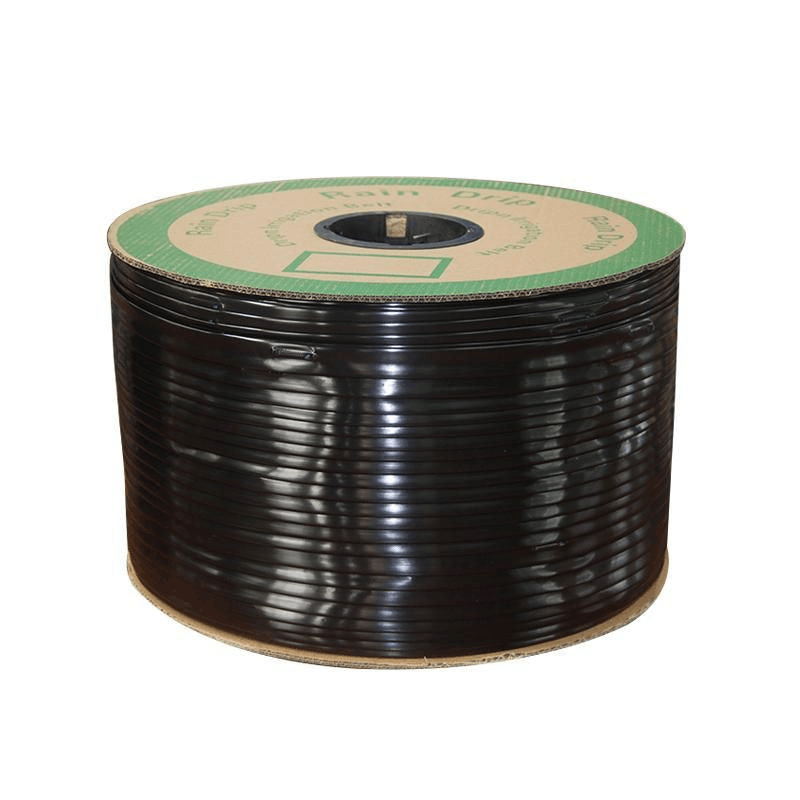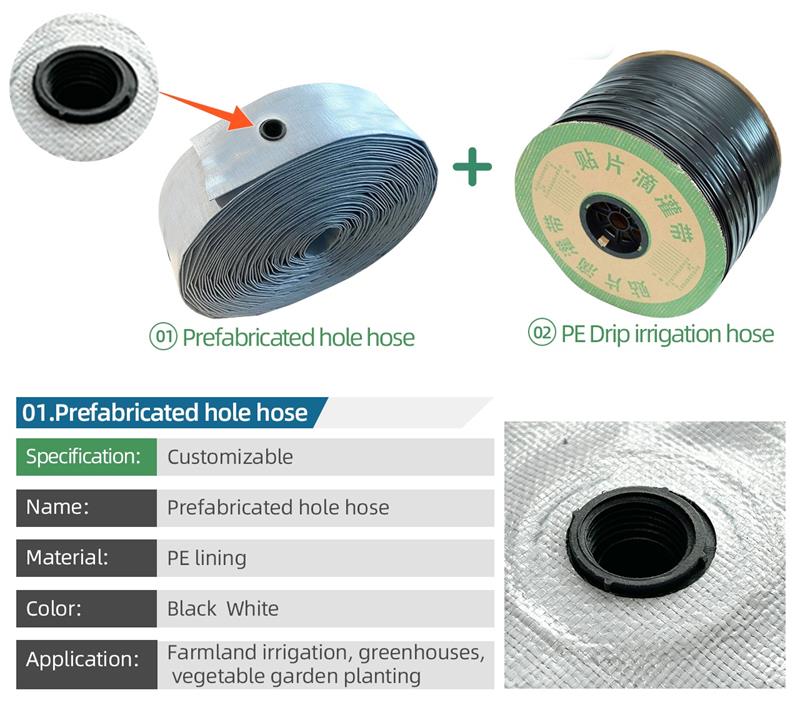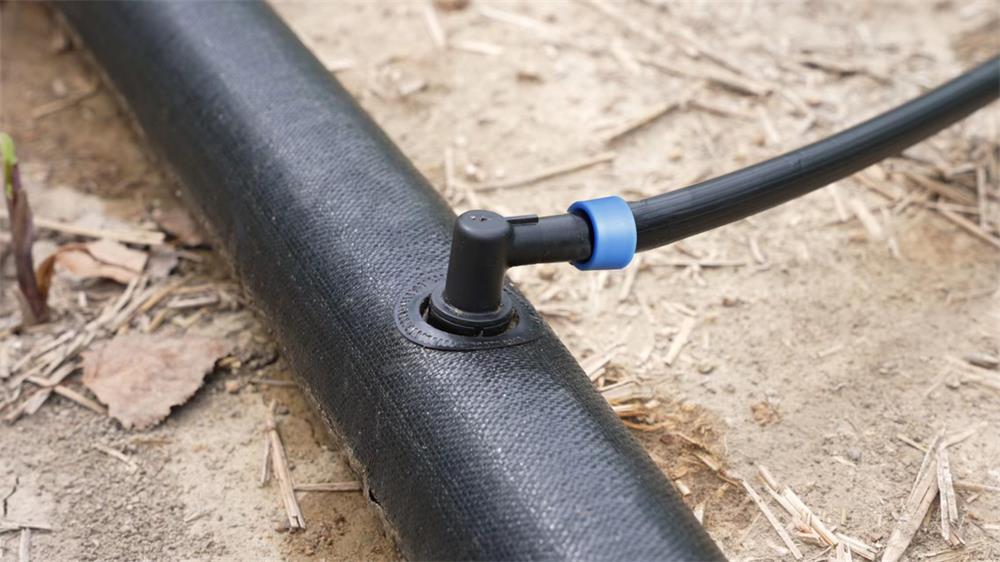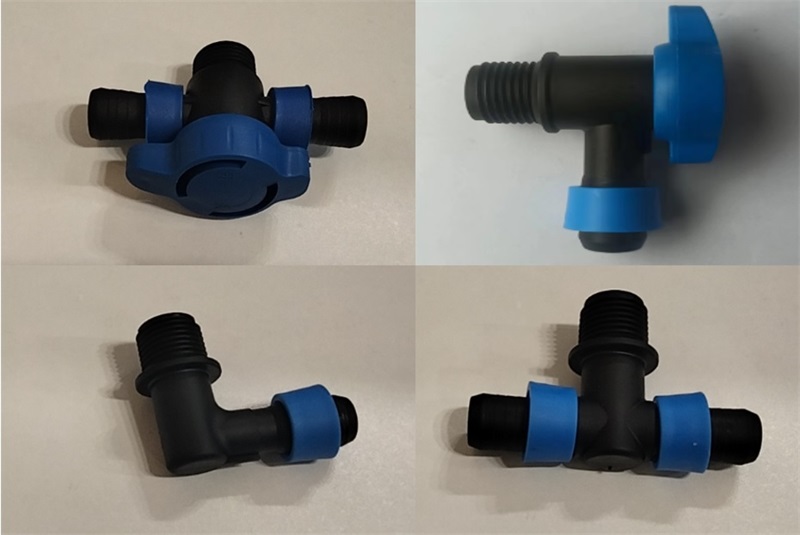What is drip irrigation tape?
Drip irrigation tape is a thin, plastic tube with emitters or orifices installed along its length. It is a key component of drip irrigation systems, which deliver water directly to the root zone of crops, minimizing water evaporation and maximizing water use efficiency. This method conserves water and promotes efficient plant growth, making it a popular choice for agricultural and garden irrigation systems.

Drip irrigation tape offers several advantages over traditional irrigation methods:
1. Water Conservation: Drip irrigation hose delivers water directly to the plant roots, reducing water waste through evaporation and runoff. This can lead to significant water savings, especially in areas with limited water resources.
2. Increased Yield: By providing a consistent and controlled supply of water to the root zone, drip irrigation hose promotes optimal plant growth and development, leading to increased crop yields.
3. Reduced Labor and Energy Costs: Drip irrigation hose requires less labor and energy to operate compared to traditional irrigation methods such as flood irrigation or sprinkler irrigation. This can translate into significant cost savings for farmers.
4. Improved Soil Health: Drip tape minimizes soil erosion and compaction, promoting healthy soil conditions and nutrient availability for plants.
5. Versatility: Drip tape can be used in a wide variety of agricultural applications, including row crops, orchards, vineyards, and greenhouses.
6. Easy Installation and Maintenance: Drip tape is relatively easy to install and maintain, making it a practical and cost-effective irrigation solution for farmers of all scales.
The components of a drip irrigation system
A drip irrigation system comprises drip tape or tubing delivering water directly to plants, emitters regulating water flow, filters preventing clogging, pressure regulators maintaining consistent pressure, backflow preventers ensuring water safety, connectors joining components, mainline tubing distributing water, and end caps and flush valves for system maintenance. Together, these components efficiently deliver water to plants, conserve water, and minimize weed growth and disease risk.

Mainline Master Tape for Water Supply

Our mainline master tape has pre-made holes, which greatly reduces the difficulty of installation and saves effort. The perforated mainline drip tape is primarily designed for ease of installation and labor-saving purposes. With pre-drilled holes along the mainline, the installation process becomes significantly simplified, requiring less effort and time.
This feature allows for quick and efficient setup, especially in large-scale agricultural or garden applications. By eliminating the need for manual hole punching, our perforated mainline drip tape streamlines the installation process, reducing labor costs and ensuring a hassle-free irrigation system setup.

Difference Between Drip Tape and Micro-Sprinkler Tape
With the continuous advancement of technology, there are various irrigation equipment options available for agricultural irrigation. Among them, drip tapes and micro-sprinkler tapes are commonly used tools. Although the names of these two irrigation devices are similar, they are actually different irrigation tools. To deepen users’ understanding of these two devices, let’s take a look at their main differences.
- The fundamental difference between drip tapes and micro-sprinkler tapes lies in “drip irrigation.” The former allows water to seep into the soil drop by drop. Compared to micro-sprinkler tapes, the water output of drip tapes is smaller, making them more suitable for drip irrigation of seedlings.
- Micro-sprinklers utilize agricultural micro-sprinkler tapes assembled into a micro-irrigation system to distribute pressurized water to fields. By irrigating with a small flow rate, the soil near the roots of crops is effectively moistened, allowing water to be conveniently irrigated to the soil near each plant, maintaining lower water stress to meet crop growth needs.
- Drip tapes typically feature embedded drip heads with a flow rate ranging from 2 to 2.5 liters per hour. The drip heads have labyrinth channels on top to adjust water flow. In contrast, micro-sprinkler tapes have water outlets in the form of needle eyes, typically with angled three-hole, five-hole, or seven-hole spray nozzles, offering higher and variable water output.
In summary, the differences between drip tapes and micro-sprinkler tapes mainly lie in the irrigation method, drip heads, and water output. Additionally, they are also used for different types of crops, a consideration for farmers when making purchasing decisions.